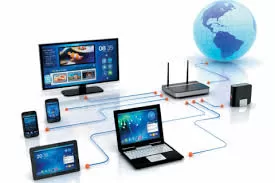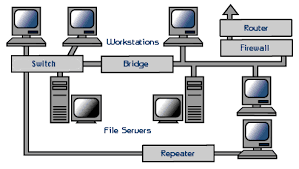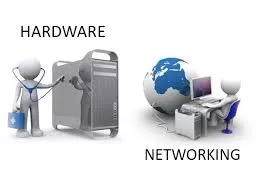Experience Unmatched Connectivity with Wi-Fi 6 🚀📶

Upgrade to Wi-Fi 6 for blazing fast speeds and exceptional performance, even in high-density environments. This next-generation technology offers high data rates, low latency, and enhanced efficiency, making it ideal for smart businesses seeking reliable and fast internet connectivity. Key terms like “Wi-Fi 6 benefits,” “high-speed internet,” and “low latency performance” highlight its advantages. For stunning visuals of Wi-Fi 6 technology in action, 🌐🔗

Efficient operations
Wi-Fi 6 not only boosts speed 🚀 but also dramatically increases network capacity 📶 to efficiently manage multiple devices and enhance overall performance. With advancements in “network capacity,” “device management,” and “performance optimization,” Wi-Fi 6 transforms connectivity by delivering exceptional speed and efficiency even in high-demand environments. 🌟🔗

Meet increasing demand
Wi-Fi 6 meets the increasing demand for higher connectivity by offering superior “network capacity,” “faster speeds,” and “low latency.” This advanced technology efficiently handles multiple devices and high data traffic, making it ideal for environments with growing connectivity needs. With “enhanced performance” and “scalability,” Wi-Fi 6 ensures reliable and robust network solutions, addressing the demands of modern, high-density applications. 🌐📈
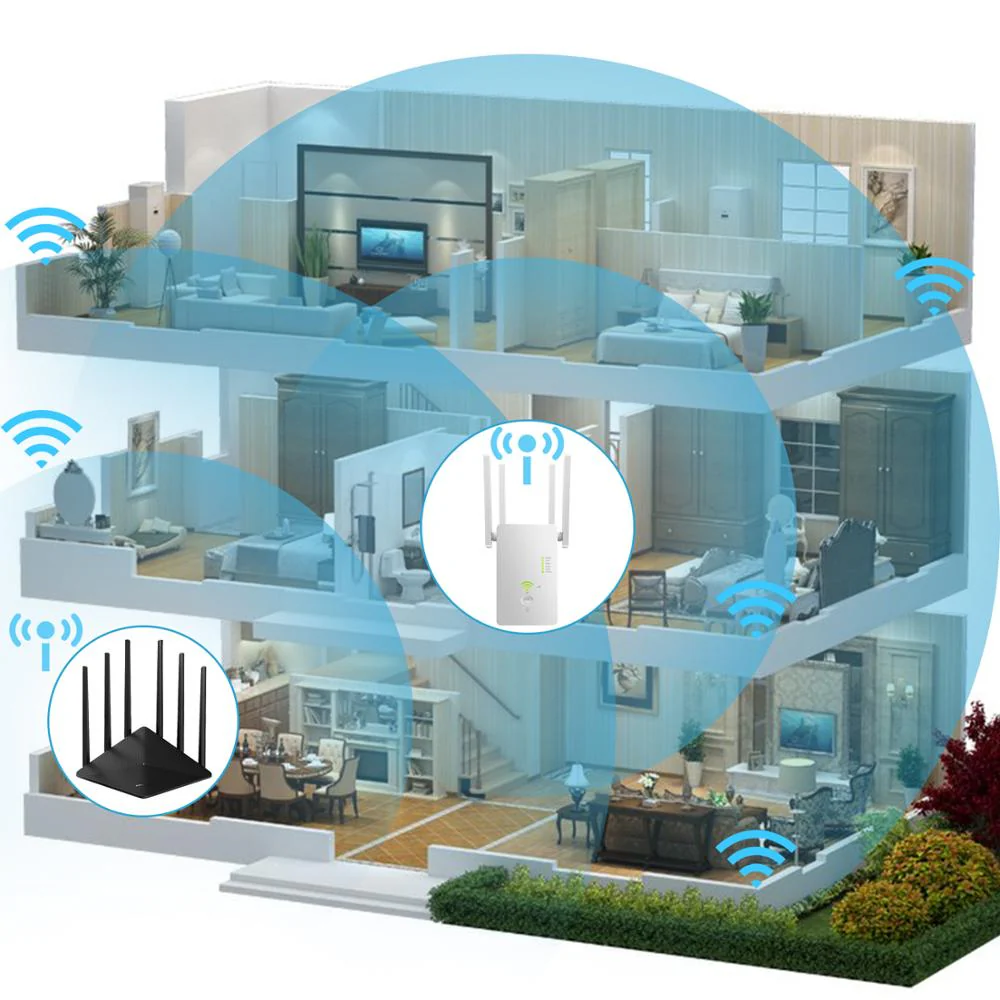
Reduce interference
Wi-Fi 6 effectively reduces interference to enhance network performance and reliability by employing advanced technologies such as “orthogonal frequency-division multiple access” (OFDMA) and “target wake time” (TWT). These innovations optimize “channel utilization” and minimize “signal congestion,” ensuring a more stable and efficient connection even in high-density environments. With improved “interference management” and “network efficiency,” Wi-Fi 6 delivers superior performance by addressing common issues like “radio frequency interference” and “overlapping channels.” By incorporating these cutting-edge features, Wi-Fi 6 provides a more reliable and consistent user experience, making it ideal for modern, high-demand settings. 🌐📊

The Backbone of Business: Ensuring Network Reliability for Optimal Performance
A reliable business begins with a dependable network infrastructure, as it is the backbone of effective operations and seamless communication. Ensuring a “robust network design” and “network reliability” is crucial for maintaining continuous connectivity and avoiding disruptions. Key features such as “high-speed internet,” “network security,” and “scalability” play a pivotal role in supporting business activities and ensuring smooth operations. With advancements in technology, investing in “modern network solutions” like “Wi-Fi 6” provides enhanced “network performance,” “increased bandwidth,” and “reduced latency,” which are essential for meeting the growing demands of today’s digital landscape. A well-designed network not only supports daily business functions but also offers “resilience against outages” and “efficient data management,” which are critical for maintaining productivity and customer satisfaction.
In today’s competitive environment, businesses require a network that can handle high data traffic and numerous connected devices with minimal downtime. A reliable network infrastructure supports “real-time collaboration,” “cloud services,” and “secure data transfers,” which are integral to achieving business goals and driving innovation. Utilizing advanced technologies such as “network monitoring tools,” “advanced firewalls,” and “network optimization strategies” ensures that the network remains secure and performs at its best. By prioritizing a “reliable network foundation,” businesses can enhance their operational efficiency, protect sensitive information, and provide superior customer experiences. This investment in network reliability translates to increased “business continuity” and a competitive edge in the marketplace. 🌐🔒

Reliable, Better Quality Wi-Fi That Reaches Further 🌐📶
Achieving reliable and high-quality Wi-Fi that extends throughout your space is essential for both home and business environments. With advancements in “Wi-Fi technology,” modern solutions like “Wi-Fi 6” offer enhanced performance and increased coverage. Key features such as “improved signal strength,” “extended range,” and “advanced coverage” ensure that every corner of your home or office benefits from a strong and stable connection. By investing in “high-performance routers,” “mesh Wi-Fi systems,” and “network extenders,” you can eliminate dead zones and ensure consistent connectivity. This not only enhances the user experience but also supports “high-speed internet” and “seamless streaming,” making it ideal for both personal and professional needs.
To achieve the best results, it’s crucial to select equipment that prioritizes “network reliability” and “signal optimization.” High-quality Wi-Fi solutions incorporate “beamforming technology,” “MU-MIMO,” and “bandwidth management” to provide a robust and efficient network. For businesses, a reliable Wi-Fi network supports “real-time communication,” “data-intensive applications,” and “increased productivity.” Utilizing these advanced technologies ensures that your network remains effective and dependable, even in high-traffic environments.

Connecting the Globe with Next-Generation Networks 🌍🔗
Harnessing the power of next-generation networks is revolutionizing global connectivity by delivering unparalleled speed and efficiency. The advent of “5G technology” and “fiber-optic networks” is setting new standards for “high-speed internet,” enabling faster data transfer and lower latency. These advancements in “network infrastructure” are crucial for meeting the demands of a digitally connected world, supporting “smart cities,” “IoT devices,” and “seamless communication.” With “enhanced bandwidth” and “reliable connectivity,” next-gen networks are transforming how we interact, work, and access information across continents, ensuring that everyone, from urban centers to remote areas, benefits from robust and fast internet.
As we advance into the era of next-generation networking, the focus is on “scalable solutions” and “cutting-edge technology” that provide superior performance and extensive coverage. “5G networks” and “advanced wireless technologies” are designed to handle high data volumes and support a growing number of connected devices, driving innovation in sectors such as “telemedicine,” “autonomous vehicles,” and “virtual reality.” By implementing these technologies, we are not only improving connectivity but also fostering global economic growth and enhancing the quality of life. For visual representation of these concepts,
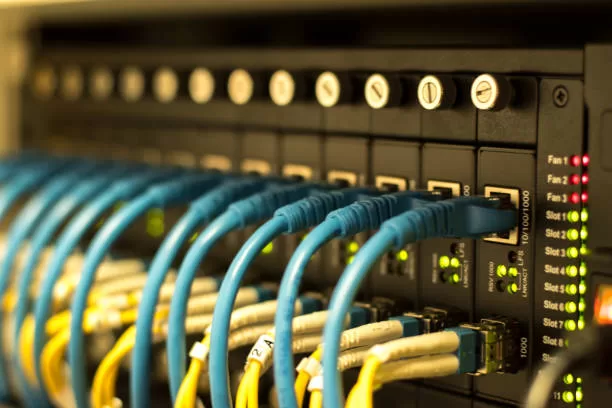
Hardware and Networking is a vast field in India.
It refers to the process of supplying data and information by linking the group of networks using hardware’s such as switches, hubs, gateways, access points, network interface cards, networking cables. To be more specific, hardware networking includes all peripherals, computers, interface cards and other tools required for communications and data processing in the network.
Servers and workstations are two broad categories of network-connected computers. Servers are not typically used directly by humans but rather run continually to provide “services” to the other computers (and their human users) on the network. Printing and faxing, software hosting, file storage and sharing, messaging, data storage and retrieval, comprehensive access control (security) for network resources, and many other services may be given.
Computers and servers on a single LAN can be linked through cables or wirelessly. Wireless access points (WAPs) enable wireless connectivity to wired networks. Wireless access points (WAPs) enable wireless connectivity to a wired network. WAP devices serve as a link between PCs and networks. A standard WAP may theoretically be able to connect hundreds or even thousands of wireless users to a network, but its practical capacity may be much lower.
